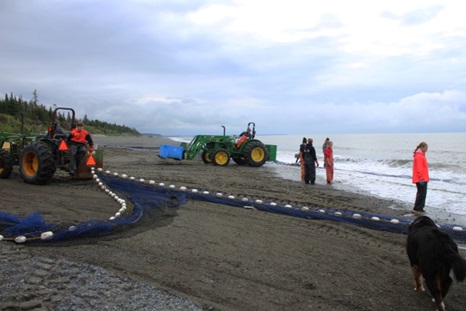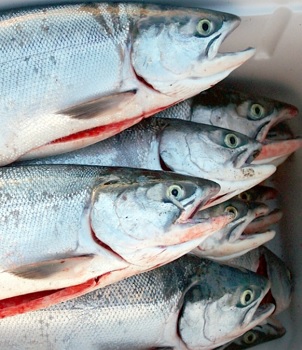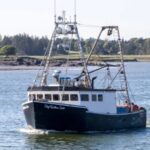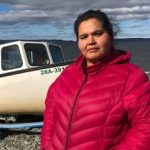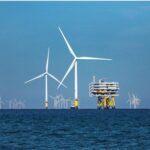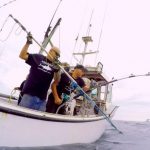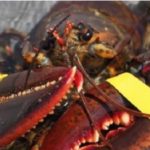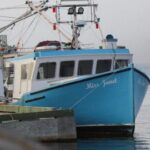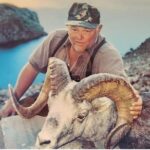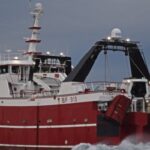Tag Archives: Cook Inlet

PWS, Cook Inlet sockeye catch exceeded harvest projections
As the sockeye salmon harvest season comes to a close, only Bristol Bay, Prince William Sound and Cook Inlet surpassed their pre-season predictions, with harvests of 31.1 million, 3.1 million and 2 million reds respectively. Cook Inlet and Prince William Sound were also the only two regions to show year-over-year growth and exceeding harvest projections, says Simon Marks, a research analyst for McKinley Research Group in Juneau, who writes the weekly in-season commercial wild Alaska salmon report on behalf of the Alaska Seafood Marketing Institute. While Bristol Bay has already surpassed the pre-season sockeye prediction by 19%, year-to-date harvest remains 23% behind 2023, Marks said on Aug. 27. Initial predictions for the 2025 season indicate an expected harvest of 32.4 million fish, a 2.8% gain if realized. more, >>CLICK TO READ<< 16:26
The federal government is assuming management of salmon fishing in parts of Alaska’s Cook Inlet
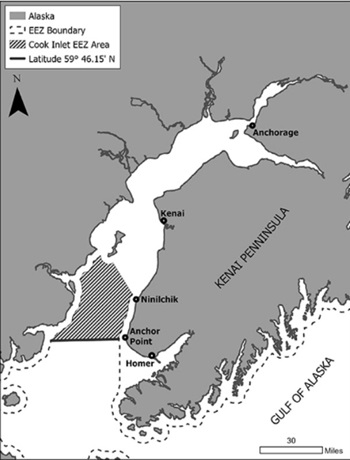 Commercial and recreational salmon fishing in the federal waters of Cook Inlet will resume this summer, but under new management by the federal government, according to a rule made final this week. Until now, the state had managed salmon fisheries in both state and federal waters of the inlet. But the switch in management was ordered by federal courts, as a result of litigation stretching back a decade. The United Cook Inlet Drift Association, or UCIDA, which is made up of commercial salmon fishers, sued the federal government in 2013 for failing to develop a salmon harvest management plan for the federal waters of the inlet. more, >>CLICK TO READ<< 13:11
Commercial and recreational salmon fishing in the federal waters of Cook Inlet will resume this summer, but under new management by the federal government, according to a rule made final this week. Until now, the state had managed salmon fisheries in both state and federal waters of the inlet. But the switch in management was ordered by federal courts, as a result of litigation stretching back a decade. The United Cook Inlet Drift Association, or UCIDA, which is made up of commercial salmon fishers, sued the federal government in 2013 for failing to develop a salmon harvest management plan for the federal waters of the inlet. more, >>CLICK TO READ<< 13:11
Board of Fisheries passes new Kenai king salmon plan
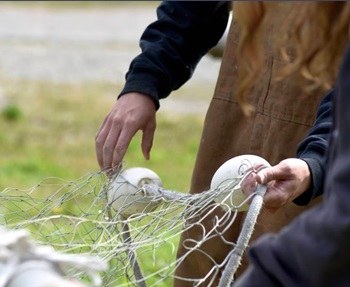 New management policies for Kenai River king salmon mean that sockeye bag limits in the river are up, and commercial setnet fishing is likely to be closed for the foreseeable future. Kenai River late run king salmon are now officially designated a stock of concern, which means a host of changes in the management plan. The Alaska Board of Fisheries finalized the designation at its meeting in Anchorage on March 1, and as part of it, revised the management plan for the fishery to help conserve more of the fish. At its October 2023 meeting, the board reviewed the Stock of Concern designation for the late run, which covers July and August in the Kenai River. At its March meeting, the board decided how to change the management plan to help rebuild the run over time. more, >>click to read<< 14:50
New management policies for Kenai River king salmon mean that sockeye bag limits in the river are up, and commercial setnet fishing is likely to be closed for the foreseeable future. Kenai River late run king salmon are now officially designated a stock of concern, which means a host of changes in the management plan. The Alaska Board of Fisheries finalized the designation at its meeting in Anchorage on March 1, and as part of it, revised the management plan for the fishery to help conserve more of the fish. At its October 2023 meeting, the board reviewed the Stock of Concern designation for the late run, which covers July and August in the Kenai River. At its March meeting, the board decided how to change the management plan to help rebuild the run over time. more, >>click to read<< 14:50
Trade groups and state unhappy with federal NOAA Fisheries management plan plan in public comments
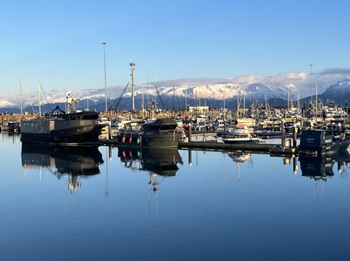 Public comment is in for a NOAA Fisheries management plan for Cook Inlet’s most productive drift fishing waters. In nearly 90 submitted public comments, cities, tribes, trade organizations and the state commissioner of Fish and Game express mixed and negative reactions to the plan. The Cook Inlet Exclusive Economic Zone, or EEZ, was the subject of a lawsuit by the United Cook Inlet Drift Association over management of the fishery, which starts three miles offshore and stretches from south 0 f Kalgin Island to Anchor Point. In response, the federal North Pacific Fishery Management Council closed the fishery in 2020, which was met with protest by Kenai Peninsula commercial fishermen. more, >>click to read<< 10:52
Public comment is in for a NOAA Fisheries management plan for Cook Inlet’s most productive drift fishing waters. In nearly 90 submitted public comments, cities, tribes, trade organizations and the state commissioner of Fish and Game express mixed and negative reactions to the plan. The Cook Inlet Exclusive Economic Zone, or EEZ, was the subject of a lawsuit by the United Cook Inlet Drift Association over management of the fishery, which starts three miles offshore and stretches from south 0 f Kalgin Island to Anchor Point. In response, the federal North Pacific Fishery Management Council closed the fishery in 2020, which was met with protest by Kenai Peninsula commercial fishermen. more, >>click to read<< 10:52
Commercial fish report shows impact of set-net closure
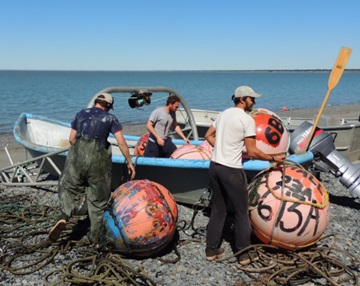 A recent report from the Alaska Department of Fish & Game shows the impact of the closure of a prominent fishery on the 2023 season for the commercial salmon industry in Upper Cook Inlet. Set-netters are worried about the future of their fishery, and the possible long-term impacts of over escapement. In Upper Cook Inlet, the report says, the 2023 commercial salmon harvest was about 40% lower than the 20-year average. Commercial fishermen caught 1.9 million salmon in the upper inlet, compared to the 20-year average of 3.1 million. Fish & Game attributes most of that decline to the closure of the east side set-net fishery, which the department closed before the season even began in anticipation of low king salmon numbers. >>click to read<< 13:04
A recent report from the Alaska Department of Fish & Game shows the impact of the closure of a prominent fishery on the 2023 season for the commercial salmon industry in Upper Cook Inlet. Set-netters are worried about the future of their fishery, and the possible long-term impacts of over escapement. In Upper Cook Inlet, the report says, the 2023 commercial salmon harvest was about 40% lower than the 20-year average. Commercial fishermen caught 1.9 million salmon in the upper inlet, compared to the 20-year average of 3.1 million. Fish & Game attributes most of that decline to the closure of the east side set-net fishery, which the department closed before the season even began in anticipation of low king salmon numbers. >>click to read<< 13:04

Months before season begins, state closes most Cook Inlet king salmon fishing
Parts of the Kenai River are still frozen over. But the Alaska Department of Fish and Game has already closed the early and late king salmon runs to sport fishing — also shutting down the beleaguered Cook Inlet east side set-net fishery before fishermen can gear up. “This is my 53rd year coming up as a set-netter, and I have never experienced this,” said Ken Coleman, vice president of the Kenai Peninsula Fishermen’s Association. He said he’s never seen the fishery close completely this early. Fish and Game does release a preseason forecast for the early king salmon run every winter, to give guides and fishermen a sense of what to expect before the summer starts. >click to read< 15:09
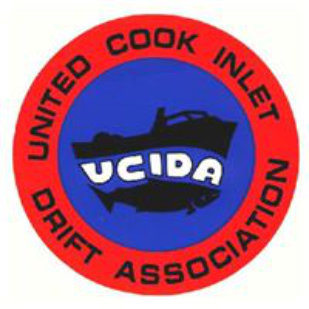
Council has 4 months to fix Cook Inlet salmon fishery management plan
The future of the Cook Inlet salmon fishery is again in the air as the North Pacific Fishery Management Council debates how to manage it after a federal court ruled that it has to write a new plan. It’s been six years since a federal court ruled that the council’s decision to remove Cook Inlet from a federal management plan and defer entirely to the state was illegal. The council initially decided to remove Cook Inlet in 2012, a decision that the United Cook Inlet Drift Association challenged in court. In 2016, the court agreed with the association, ordering the council to create a new federal management plan that includes the federal waters of Cook Inlet. >click to read< 09:47
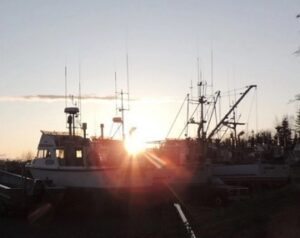
Feds working on new plan for contentious Cook Inlet fishery
Federal fisheries managers say they’ve started working on a new management plan for the Cook Inlet salmon fishery, months after a court said their plan to completely close the fishery was unjust. At a meeting in Anchorage Thursday, Jon Furland with NOAA Fisheries told the North Pacific Fishery Management Council that time is of the essence to create a new plan and comply with the court. In 2020, following a lawsuit from the United Cook Inlet Drift Association over management of the drift fishery, the council voted to close a large swath of Cook Inlet to commercial salmon fishing. The closure applied to Cook Inlet’s federal waters,,, >click to read< 16:48
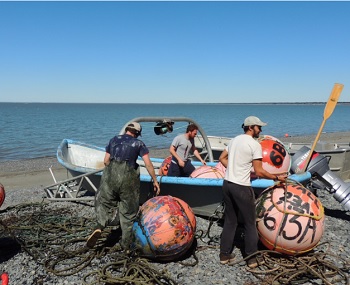
Set-netters’ case shot down, again, in court
And after the closure in 2019, set-netters represented by the Cook Inlet Fishermen’s Fund sued the state in hopes the court would order managers to rework that management plan and others. It alleged restrictions the state had placed on the commercial fishermen were unscientific and arbitrary and flew in the face of the Magnuson-Stevens Act. The Kenai court said because there was no federal management plan for Cook Inlet fisheries at that time, the state was not bound by those standards. And it said the state’s Board of Fisheries and Department of Fish and Game had the discretion to write and enforce their own rules. The Supreme Court doubled down on that opinion last week. >click to read< 12:04

Cook Inlet fishermen sue over set-net closures
Days after they were ordered to take their nets out of the water, Cook Inlet set-netters are suing the state over the fishery’s closure. In a case filed in state court last week, the Cook Inlet Fishermen’s Fund, representing Cook Inlet fishermen, said the state is mismanaging the east-side set-net fishery to the benefit of other user groups. It’s asking the state to immediately reopen the fishery this season to its 440 or so permit-holders, to pay fishermen back for what they lost and to revise the plan that closed it in the first place. Due to restrictions linked to the sport fishery, the east-side set-net fishery in Cook Inlet closes when king salmon abundance on the Kenai River is low. The set-netters were shut down early this year for the fourth year in a row. >click to read< 11:12
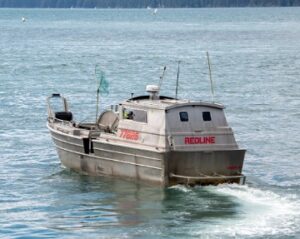
PWS harvest soars above 9M fish, statewide catch exceeds 16M salmon
Commercial harvesters in the Prince William Sound region delivered upwards of 371,340 salmon through Tuesday, June 28, while the statewide preliminary harvest exceeded 16 million fish, including deliveries in Bristol Bay, Cook Inlet, Kodiak and the Alaska Peninsula. Harvests reached almost 8% above year-to-date 2021 (2020 for pinks), led by strong sockeye harvests in the Alaska Peninsula and Bristol Bay regions, according to Sam Friedman, who is producing the McKinley Research Group weekly in-season reports on behalf of the Alaska Seafood Marketing Institute. For Prince William Sound, harvests and the weights of salmon harvested remained below the 10-year average, according to Alaska Department of Fish and Game biologist Jeremy Botz, in Cordova. >click to read< 09:06
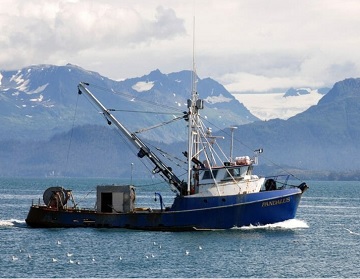
In victory for commercial fishermen, court orders Cook Inlet fishery to reopen
Cook Inlet drift fishermen can fish the federal waters of the inlet this summer after all. That’s after a district court judge shot down a federal rule that would have closed a large part of the inlet to commercial salmon fishing. Fishermen said it would have been a death knell for the fishery, which has 500 drift permit-holders. One of those permit-holders is Erik Huebsch, of Kasilof. He’s vice president of the United Cook Inlet Drift Association, which filed the suit. And he said he’s pleased. “Opening the EEZ is vital to the fleet,” Huebsch said. “Without opening the EEZ, the drift fishery is really not viable. That’s where we go to catch fish.” >click to read< 12:19
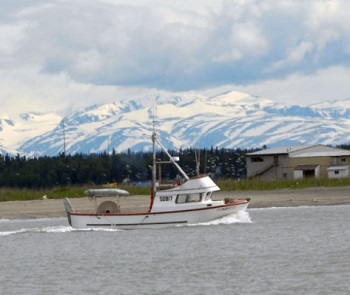
Alaska Department of Fish and Game forecasts fair to poor sockeye runs for Cook Inlet, Copper River
State biologists are projecting a mixed bag of returns this spring and summer for Southcentral’s popular sockeye salmon fisheries. Alaska Department of Fish and Game officials on Feb. 7 issued a forecast estimating that just less than 5 million sockeye will return to upper Cook Inlet river systems, allowing for a harvest of nearly 3 million sockeye from the region overall. It’s expected approximately 2.9 million fish from the total run will be headed to the Kenai, with another 941,000 pegged for the nearby Kasilof. >click to read< 19:19

Fishery Disaster Assistance: Aid can take years to come through
The designation is supposed to unlock funds to help the communities impacted by those fisheries failures, including communities around Cook Inlet. But it can take years for the money to reach fishermen’s pockets. U.S. Sen. Lisa Murkowski said the timing is one of the problems with the process. “If you’ve had a disaster that happened in 2018, we’re sitting here in 2022 and you’re saying, ‘Really? You think that that’s going to help me?’ In the meantime. I’ve got a boat mortgage that I’ve got to be paying. I’ve got a crew that I’ve got to be paying. This doesn’t help me at all,” she said. >click to read< 16:49

Kenai Peninsula Municipalities still working to oppose EEZ closure
Peninsula municipalities are still fighting back against the closure of federal waters in Cook Inlet to commercial salmon fishing. The city councils of both Kenai and Homer have agreed to file amicus briefs in a lawsuit brought forth by the United Cook Inlet Drift Association, which has a goal of reopening the waters before the 2022 summer fishing season. Groups across the peninsula, including the cities of Homer and Kenai as well as the Kenai Peninsula Borough, have consistently voiced their opposition to the closure of Cook Inlet’s federal waters to commercial salmon fishing. >click to read< 10:59
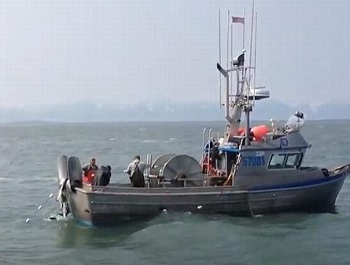
Commercial fishermen sue over Cook Inlet closure
Commercial fishermen are going to court in an attempt to keep Cook Inlet open to salmon fishing. That’s following a controversial decision by the feds to close a large swath of Upper Cook Inlet that’s long been managed by the state and is an important area for drift gillnet permit holders. The decision to close the federal Cook Inlet salmon fishery was approved by the feds last week but was first proposed last December by the North Pacific Fishery Management Council, which sets policy in Alaska’s federal waters. >click to read< 08:08

Cook Inlet Federal Waters Closed to Commercial Salmon Fishing
The Biden Administration has closed the federal waters of Alaska’s Cook Inlet to commercial salmon fishing for the 2022 Cook Inlet commercial salmon fishing season. This action closes a portion of the historically used fishing area for the Cook Inlet drift gillnet salmon fishery. NOAA Fisheries, the agency responsible for the stewardship of national marine resources, published the final rule in the Federal Register November 2, and it takes effect 30 days after that. >click to read< 13:51
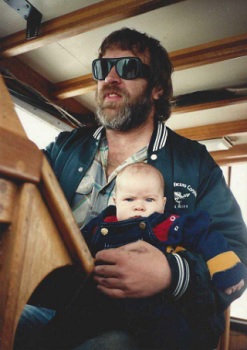
Net migration: Young commercial fishermen ship out of Cook Inlet
The Cook Inlet salmon fishery was once an economic engine for Kenai. But the fishing there is no longer lucrative. Many fishermen with deep ties to the inlet are retiring, or moving elsewhere. The F/V Nedra E is smaller than the other boats bobbing at the dock in Naknek. Thor Evenson didn’t have Bristol Bay in mind when he designed the boat for his parents, Nikiski homesteaders Jim and Nedra Evenson. Until last year, she’s been a Cook Inlet boat, captained by Jim, then his nephew, and now his grandson, 32-year-old Taylor Evenson. Last year, Taylor couldn’t put it off any longer. So with the help of the boat’s original builder, Kevin Morin of Kasilof, he gutted everything behind the cabin, chopped several inches off bow and stern, and installed a brand new deck, to bring the Nedra E in line with Bristol Bay standards. >click to read< 07:50
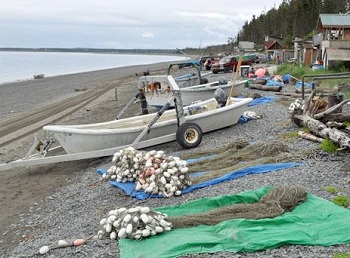
Some setnetters ask state to reopen limited fishery
Commercial setnet fishermen in Cook Inlet had their season cut short last week. When the Alaska Department of Fish and Game closed the Kenai River to sportfishing for king salmon, it closed the east setnet fishery completely. Some of them had only had a handful of openers. There are still plenty of sockeye in the water, which are the main fish the commercial fleet harvests, and setnetters are making some last-ditch plays to try to save some of their season. Ted Crookston, who has been setnetting on the Salamatof beach for nearly six decades, is asking the Board of Fisheries to at least open the setnets in a narrow strip just offshore—out to 600 feet below mean high tide.,, “We’re sitting here on the beach and catastrophically denied access to anything and you’re saying that it’s justified—it’s not,” >click to read< 13:48
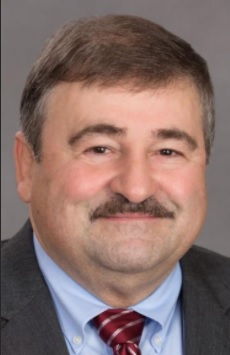
Mark Lawton Doumit, a commercial fisherman, politician, public servant, has passed away in Tenino, Wash.
Mark was born in Longview, Wash., on November 26, 1961, to Eli and Patricia Doumit and was the 10th of 11th children. He grew up in his family’s hometown of Cathlamet, Wash. While still in high school, Mark began a lifelong passion for commercial fishing. He began his career in the industry in high school, working on the Columbia River as a fish buyer. In college he began a nearly 40-year career in Alaska working in canneries and crewing on drift gillnet boats in Prince William Sound and Bristol Bay. Mark bought his own commercial salmon fishing operation in Cook Inlet, Alaska in 1986 and spent the remainder of his fishing career between Cook Inlet in the summer and lower Columbia River in the spring and fall. One of his great joys in life was the opportunity to fish alongside his sons and so many of his family and friends. >click to read< 09:24
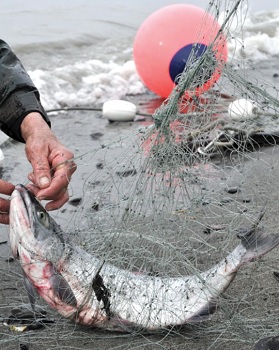
Sen. Peter Micciche is again moving to establish a buyback program for set-net permits in Cook Inlet
The program would reduce the number of commercial set-net fishermen on the east side of the inlet. Proponents of the bill, like Kenai Peninsula Fishermen’s Association Director Ken Coleman, say that’s to reduce pressure and create a more sustainable fishery in an area that’s been under stress for years. “Our thought was if we could reduce our numbers, then those who would be left behind in a reduction scenario, assuming that some people would leave the fishing community, that those that are left behind would have a better chance for ongoing financial viability,” he said. >click to read< 09:46
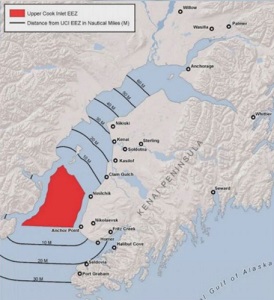
NPFMC decision puts Cook Inlet commercial salmon fishery in jeopardy
Final action by the North Pacific Fishery Management Council on commercial salmon fishing in Cook Inlet threatens to exclude drift gillnet harvesters from fishing in the inlet’s commercial waters at the start of the 2022 fishing season. In a near unanimous decision reached during the council’s virtual meeting on Monday, Dec. 7, the panel selected an alternative that would close off to the commercial fleet federal waters outside of three miles from shore, an area where most of the fleet get the bulk of its catch. >click to read< 16:43
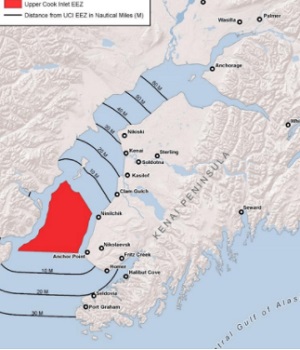
Opposition mounts to proposal to close part of Cook Inlet to salmon fishing
The southern half of Cook Inlet will have a new fishery management plan in under a month. Commercial fishermen are organizing with the help of their city councils to make sure that plan is not the proposed “Alternative 4,” which would close off federal waters south of Kalgin Island to commercial salmon fishing. “I hate to be overdramatic in a lot of cases, but you could almost call it a deathknell for drift fishing in Cook Inlet,” he said. The North Pacific Fisheries Management Council is taking public comment on the matter until 5 p.m. Friday. As of Monday, over 80 commenters had voiced opposition to Alternative 4,,, >click to read< 11:32
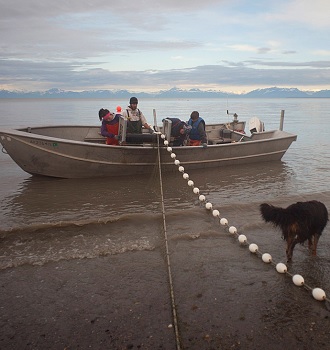
Cook Inlet setnet permit buyout bill stalled in Senate
Senate Bill 90, sponsored by Sen. Peter Micciche, R-Soldotna, would establish a mechanism in law for setnetters on Cook Inlet’s East Side to set up a permit buyback. There’s no funding included in the bill, but the establishment of the mechanism itself would allow stakeholders to seek funding, whether it comes from the federal government, state, or private equity. ,, The East Side setnet fishery has gradually been losing value for years. For the last few decades, user-group politics have led to the Board of Fisheries reducing the time and area allowances for setnetters on Cook Inlet’s East Side, who compete for salmon headed for the Kenai and Kasilof rivers, which also host large sport and personal-use fisheries. more, >click to read< 20:46
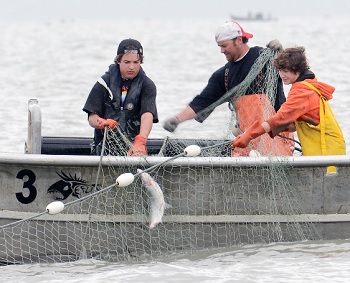
Cook Inlet salmon fisheries into full swing after rough 2018
Upper Cook Inlet salmon fisheries are now in full swing, with promising sockeye returns finally showing up. East Side setnetters in the sections north of Kasilof opened for their first period July 8, and the personal-use dipnet fishery on the Kenai River opened July 10. They join the drift gillnet fleet and other Upper Cook Inlet setnetters as well as the inriver sportfishery and the Kasilof River personal-use fishery. As of July 8, nearly 80,000 sockeye salmon had passed the sonar in the Kenai River. That’s more than double the number that had passed through on the previous date in 2018, when only 37,513 had passed, according to the Alaska Departm,,, >click to read< 15:31
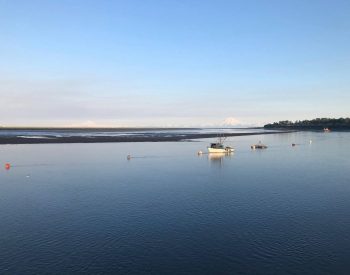
Cook Inlet fishermen celebrate ‘Return of the Reds’ with hope for 2019
Cook Inlet fishermen are looking forward to their salmon season with high hopes that the sockeye will arrive in better numbers than last year. On June 11, fishermen and processors grilled up some of the first Cook Inlet salmon of the year at the Pacific Star processing plant in Kenai, gathering to build excitement for the coming season. The plant is now receiving salmon from the west side of Cook Inlet, while the fishermen in the drift gillnet and east side set gillnet fleets gear up for their first expected openings in the coming weeks. >click to read<15:24
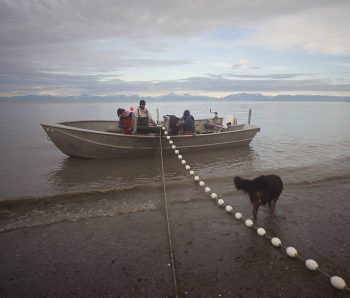
Cook Inlet setnet buyback program gains support
Cook Inlet fishermen are again pushing for a bill that would authorize a commercial set gillnet permit buyback, but with the budget battles ongoing, it may not advance this year. Senate Bill 90 is the latest version of the plan to set up a buyback program for setnet permits on Cook Inlet’s east side. About 440 permits exist on the east side, targeting primarily sockeye salmon with secondary catches of king salmon headed for the Kasilof and Kenai rivers. The bill, sponsored by Sen. Peter Micciche, R-Soldotna, aims to permanently remove up to 200 permits and their shore leases from the fishery. The fishermen have been debating a way to reduce the fleet for about four years,,, >click to read<21:23
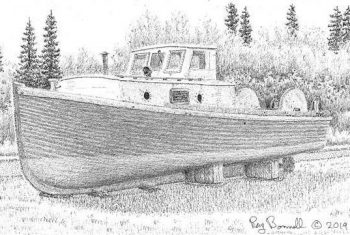
K-6 gillnetter is a reminder of Kenai’s long fishing history
One of the earliest commercial transactions involving Alaska salmon occurred in 1786. In that year two British ships stopped in Cook Inlet, which was then under Russian-American Company control, to trade Hawaiian yams for fresh salmon. The Russian-American Company never developed a for-profit salmon industry. However, after the United States acquired Alaska in 1867, Americans began operating salteries in Southeast Alaska to preserve the fish for market. In 1878, the first Alaska cannery was built at Klawock on Prince of Wales Island. Within four years, canneries had reached Cook Inlet in Southcentral Alaska. >click to read<08:31






